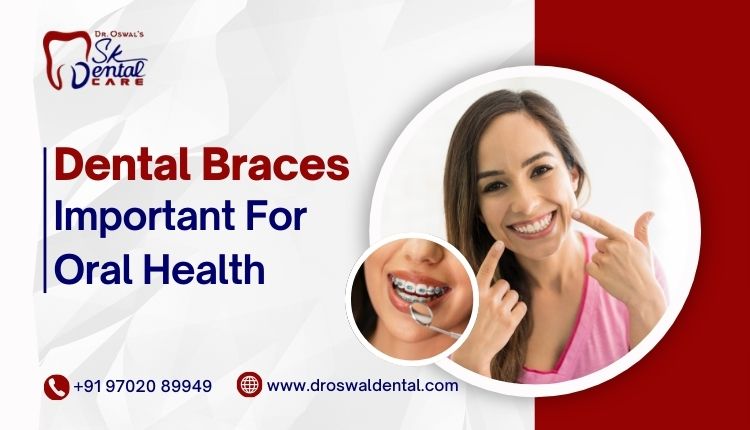
Dental braces are orthodontic devices that help straighten misaligned, overcrowded, or crooked teeth. By strengthening your smile, they not only improve your facial aesthetics but also your overall oral health.
While it is a common saying that braces are for kids and teens, experts don't say so. Braces can be a great orthodontic solution for adults with misalignment. This blog will explore how braces treatment in Panvel can help you restore your smile.
It may be difficult to properly brush and floss teeth that are crooked, crowded, or gapped, which can result in cavities and plaque accumulation. By gradually realigning teeth, braces promote healthier gums and simpler cleaning.
Excessive pressure on some teeth due to a poor bite (malocclusion) can result in uneven wear, chewing difficulties, and even jaw pain. By addressing overbites, underbites, and crossbites, braces can avoid these chronic problems.
Misaligned teeth can make it difficult to speak clearly, leading to lisping or trouble pronouncing some words. Orthodontic therapy can enhance articulation when the tongue and teeth are positioned correctly.
Straight teeth are simpler to maintain, which lowers the possibility of food particles becoming lodged and stops plaque buildup. This considerably reduces the chance of tooth decay and gum disease.
A misaligned bite can cause headaches, pain, and temporomandibular joint (TMJ) issues by straining the jaw muscles. Braces lessen jaw strain by distributing bite pressure evenly.
Because of the uneven pressure, misaligned teeth may chip or grind excessively. Proper tooth alignment with braces ensures balanced force distribution and shields enamel from needless damage.
A straighter smile promotes improved social interactions and increases self-esteem. After receiving orthodontic treatment, many people feel more at ease when speaking, smiling, and interacting with others.
People who wear braces are more conscious of their oral hygiene regimen. They improve their long-term oral health by becoming more conscious about brushing, flossing, and scheduling routine dental checkups.
Metal braces, the most popular kind, are incredibly strong and efficient. Even the most complicated orthodontic problems can be treated with them at a reasonable cost.
These function similarly to metal braces but are less obvious because they are composed of clear or tooth-colored plastic. Ceramic Braces are a well-liked option for people seeking more covert care.
Invisalign and other removable, invisible trays provide a practically undetectable and comfortable method of tooth straightening. For people who want flexibility in their orthodontic treatment, they are perfect.
Lingual braces are positioned beneath the teeth and are not visible. They are just as effective as regular braces but have an aesthetic advantage.
Use floss threaders and a soft-bristled toothbrush to clean the area around brackets and wires. Food particles can be removed from difficult-to-reach places with the use of orthodontic-friendly instruments like interdental brushes.
Steer clear of foods that are sticky, hard, or sweet, as these can harm braces and cause cavities. To facilitate chewing, choose softer foods and cut fruits and vegetables into smaller pieces.
Frequent checkups with the orthodontist guarantee that braces are functioning properly and that no problems with dental health occur when treatment is being administered. Maintaining development requires cleanings and adjustments.
In addition to straightening teeth, braces also improve biting function, lower the incidence of gum disease, and prevent cavities, all of which contribute to long-term oral health. You can prevent future dental issues by making an orthodontic treatment investment. To find the best alternatives for your smile and general health, consult an orthodontist if you're considering braces.